At the border of two environments. Diving ships: history and prospects
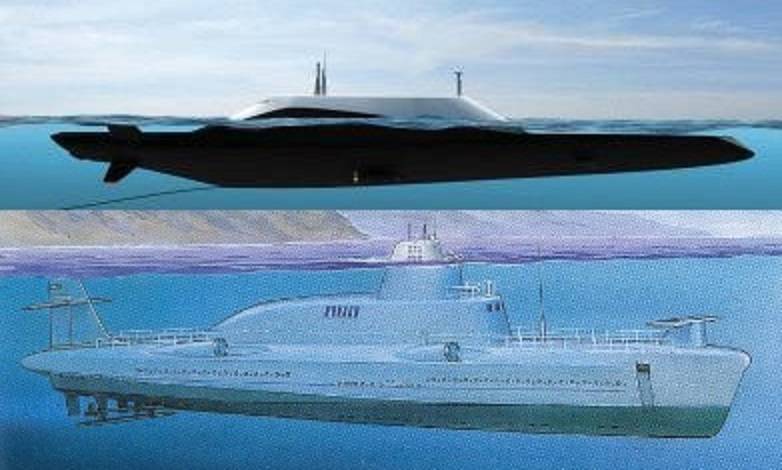
On and under water
At the beginning of the XNUMXth century in the naval fleets leading countries of the world began to develop two types of ships: surface ships (NK) and submarines (PL), the design and tactics of which were radically different. However, before the appearance of submarines with a nuclear power plant (NPP), submarines could be called rather underwater surface, since the imperfection of the electric batteries of that time did not allow them to stay above water for a long time. Even the invention of the snorkel only partially solved the problem, since the submarines of that time were still tied to the surface of the water.
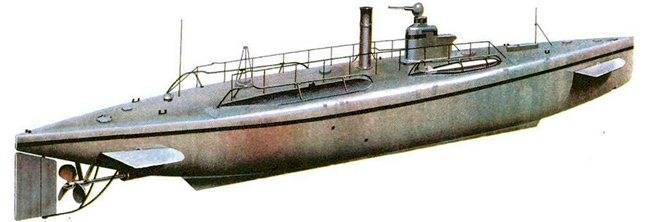
Nevertheless, finding the submarine at the interface between the two media was not an end in itself, but a necessary measure, and in the future, as technology improved, submarines began to be under water most of the time. The appearance of nuclear power plants provided the submarines with almost the time spent under water, limited more by the endurance of crews than by technical barriers.
Since in the first half of the XNUMXth century, submarines spent most of the time moving above the surface, with short-term dives to carry out an attack on the target or to avoid a strike, the submarine hulls of those times had a nose-tip construction with a pointed nose, optimized for better seaworthiness. As submarines spent more and more time under water, the form of their hull more and more departed from the form inherent in surface ships, acquiring characteristic drop-shaped outlines.
Over time, there was practically nothing in common between surface ships and submarines. However, there were projects in which it was supposed to combine the advantages of surface ships and submarines.
Diving ships
One of the most famous hybrids of a surface ship and a submarine can be considered the project 1231 domestic small submersible missile ship, developed since the 1950s, which was a missile boat capable of diving and moving under water, which provided greater stealth compared to conventional missile boats at a higher than conventional submarines surface speed.
It was assumed that the projecting 1231 missile ship would be able to ambush, secretly waiting for the enemy, or also secretly independently advance under water in the direction of the enemy. After detecting the target, the diving ship ascends and reaches the distance of a missile strike at maximum speed. The advantage of the approach was to be greater stability over aviation the enemy. At the same time, air defense systems were absent on the project 1231 ship.
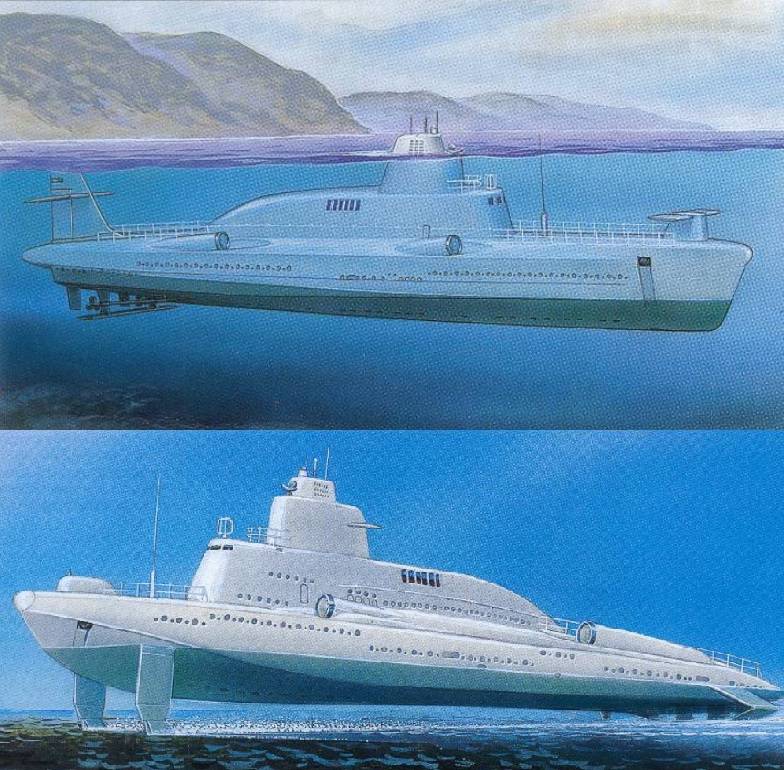
In fact, the submersible missile ship of project 1231 had a low speed and underwater range. Shallow immersion depth in the absence of air defense allowed enemy aircraft to freely use anti-submarine weapon. The disadvantages include the increased complexity of the design, as well as the imperfection of the design due to the lack of experience in the construction of "hybrid" ships of this type.
A modern example of a diving ship is the 25st century SMX-2010 warship project, presented by the French shipbuilding concern DCNS at the Euronaval 25 naval exhibition. The length of the SMX-110 is about 3000 meters, the underwater displacement of 25 tons. The semi-submerged body has an elongated shape, optimized for high speed in the surface position. As conceived by the creators, the submarine frigate SMX-38 should quickly, at a speed of XNUMX knots, arrive in the combat area, and then go under water and covertly attack the enemy.
It is characteristic that in the Soviet project 1231 and in the French project SMX-25, the main mode is the surface mode of movement, while the underwater mode is intended only to “creep up” to the enemy. Under the conditions of saturation of the battlefield with various sensors, it can be assumed that a ship moving at high speed will be detected long before approaching the enemy forces, and after immersion it will be found and destroyed by anti-submarine forces.
Another "hybrid" vessel can be considered the project of a high-speed submarine of the British company BMT. An SSGT submarine with a ship-borne submersible gas turbine must be capable of cruising at near-surface depths at a speed of 20 knots, with the possibility of acceleration up to 30 knots.
Air supply for turbines is carried out through a retractable shaft, essentially a snorkel. The shape of the submarine housing is optimized to minimize the influence of surface waves. In a completely underwater mode of movement, the movement is carried out due to fuel cells with autonomy up to 25 days.
Unlike the Soviet project 1231 and the French project SMX-25, which are more likely to be surface ships with the possibility of immersion, the British project of a "hybrid" ship is more likely to be a submarine. Nevertheless, SSGT project submarines are firmly attached to the surface, since its supposed advantage - high speed of movement, is realized only when moving in the near-surface layer with an extended air intake device.
Indirectly, semi-submersible transport vessels, such as, for example, the Chinese ship Guang Hua Kou, can also be mentioned. In them, the partial immersion ability is used not for gaining advantages in battle, but for loading and transporting bulky goods - oil platforms, surface ships and submarines.
In addition to the above projects of diving and semi-submersible vessels, there were other projects, for example, to create semi-submerged tankers for transporting oil and gas in the extreme north. One of these projects was proposed by the candidate of military sciences, Yuri Berkov, who served in the Northern Fleet, later a leading employee of one of the defense research institutes of the USSR / RF Ministry of Defense, in the editions From Fiction to Reality and My Underwater World, which included, among other things, problems of the movement of ships in the surface layer. In general, it is difficult to say how many such projects and studies are in the secret archives of the Ministry of Defense, specialized institutes and design bureaus, so the topic can be worked out much deeper than it seems.
Threats to surface ships
Are there any factors that may require the development of submersible / diving ships? After all, apart from conceptual projects, no country in the world produces such ships? There is no doubt that diving ships will be more complicated and more expensive than traditionally built ships. What is the point of creating them then?
If we talk about reducing visibility, then this problem is successfully solved by the layout of the surface of the ships in accordance with the canons of stealth technology. Movement under water for the purpose of camouflage would be better carried out by a submarine of a classic design, which does not need to be close to the surface.
Perhaps for Russia the answer lies in quantity. In the number of enemy surface ships and submarines, the number of universal launchers on them, the number of weapons carriers on aircraft carriers of potential opponents.
If during the Cold War, the reflection of massive attacks by anti-ship missiles (RCC) was primarily a US problem, now the situation has changed. In the 158st century, the U.S. Navy received highly effective long-range anti-ship missiles AGM-84C LRASM. Compared to the previously used AGM / RGM / UGM-500 Harpoon anti-ship missiles, LRASM anti-ship missiles have a significantly longer flight range (over 158 kilometers), unlike the anti-ship version of the Tomahawk cruise missile, LRASM anti-ship missiles have versatile carrier types. In addition, AGM-XNUMXC LRASM anti-ship missiles have low visibility, a highly efficient noise-resistant homing head and intelligent target attack algorithms.
About RRC LRASM is written in detail in an article by Andrey from Chelyabinsk “On the revolution in the naval art of the USA. RCC LRASM ».
Carriers of LRASM anti-ship missiles should be surface ships with vertical launch installations (UVP) Mk 41, supersonic bombers B-1B (24 anti-ship missiles), carrier-based multi-role fighters F-35C, F / A-18E / F (4 anti-ship missiles). It is likely that there will be a modification of the LRASM anti-ship missiles for equipping submarines of the US Navy and their allies.
Ten B-1B bombers can carry 240 LRASM anti-ship missiles, and twenty B-480B bombers can carry 61 anti-ship missiles, and the US Air Force has 1 B-48B bombers. The Nimitz-type aircraft carrier group includes 18 F / A-192E / F multipurpose fighters, which can carry 41 LRASM anti-ship missiles, and a hundred can add security ships with the Mk XNUMX air defense system. Thus, the air forces and the USS Navy can launch massive attacks against the enemy fleet including several hundred anti-ship missiles in a salvo.
Russia is not capable of building a surface fleet capable of withstanding a massive attack by anti-ship missiles in the foreseeable future.
Earlier on “Military Review”, articles by Oleg Kaptsov on the expediency of reconstructing battleship-class ships at a new technological level, the armor of which will be able to withstand the attacks of anti-ship missiles, were published.
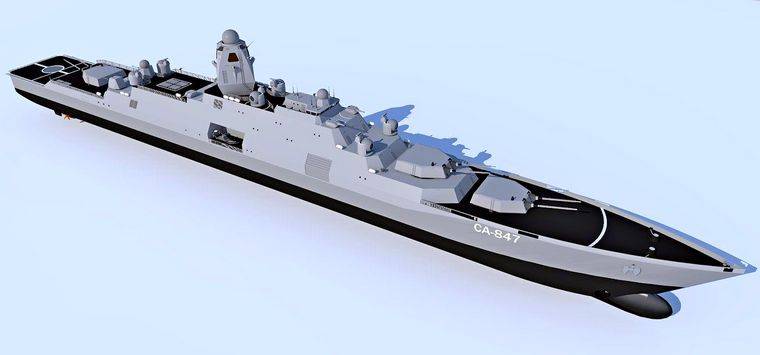
Without going into a confrontation between missile and armor, it can be assumed that in Russia, which is unable to build destroyer-class ships, it will be practically impossible to build a battleship. But Russian industry has not yet forgotten how to build submarines.
But abandoning surface ships in favor of building submarines alone is impossible, since the latter cannot completely replace surface ships, primarily because of the impossibility of providing air defense (air defense) of the combat area. Equipping submarines with anti-aircraft missile systems (SAM) capable of operating from under water from a periscope depth, discussed in the article At the border of two environments. The evolution of promising submarines in conditions of increased probability of their detection by the enemy will allow the submarine to solve limited missions for defense against anti-submarine aircraft of the enemy, but not provide air defense of the area.
Even the equipment of submarines of long-range air defense systems considered in the articles “Atomic multifunctional submarine cruiser: an asymmetrical response to the West” и "Nuclear-powered multi-functional underwater cruiser: a paradigm shift"will not allow the replacement of surface ships. In the considered form, the AMPKKs are more likely to be used for raider operations: entering the line, striking at carrier-based aircraft in the air, and enemy surface ships, followed by secretive withdrawal, but not to provide air defense for the combat area.
Perhaps a solution to diving ships operating on the border of two environments? The concept of a diving surface ship, its advantages compared to surface ships of a classic design and its place in the Russian Navy will be considered in the following material.
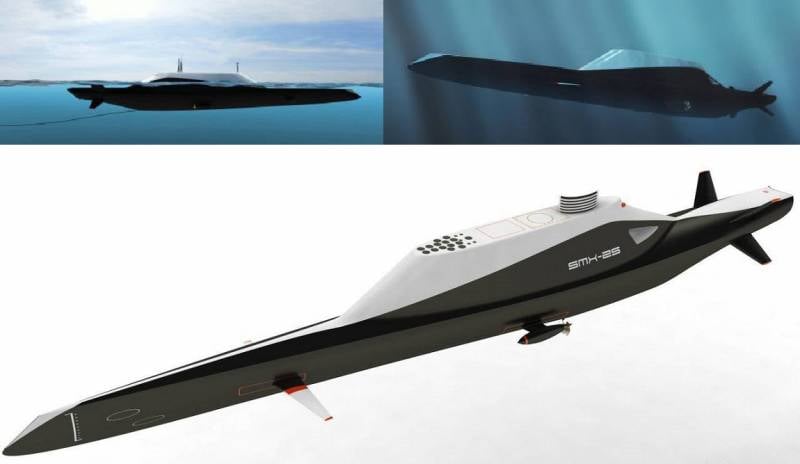
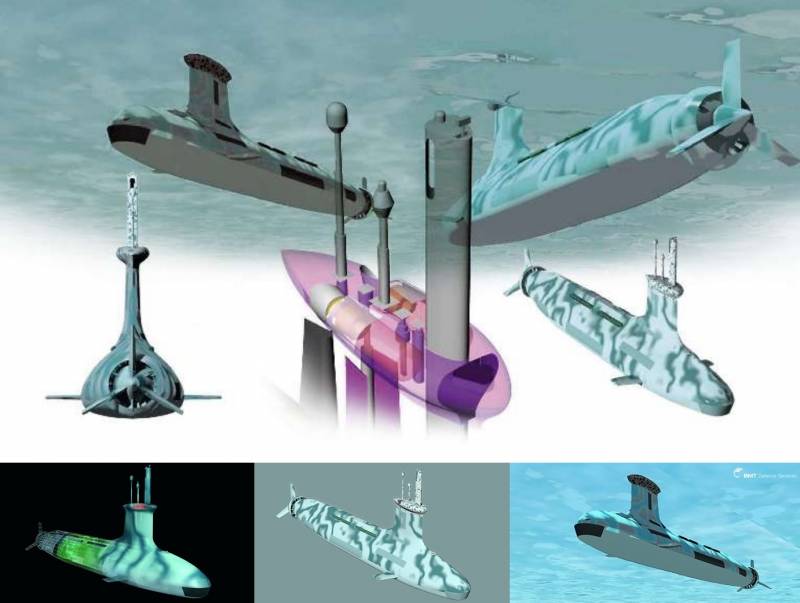
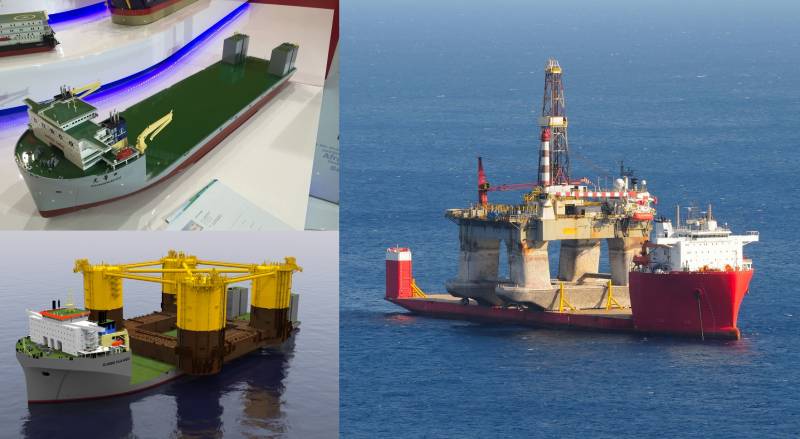
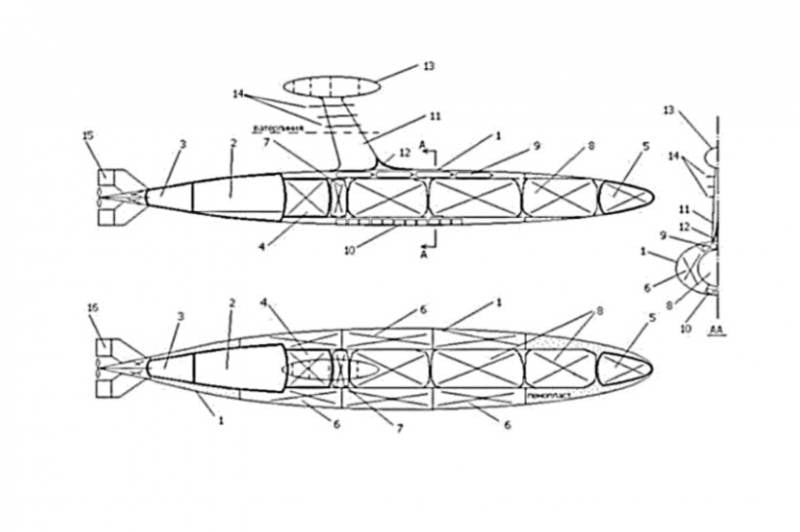

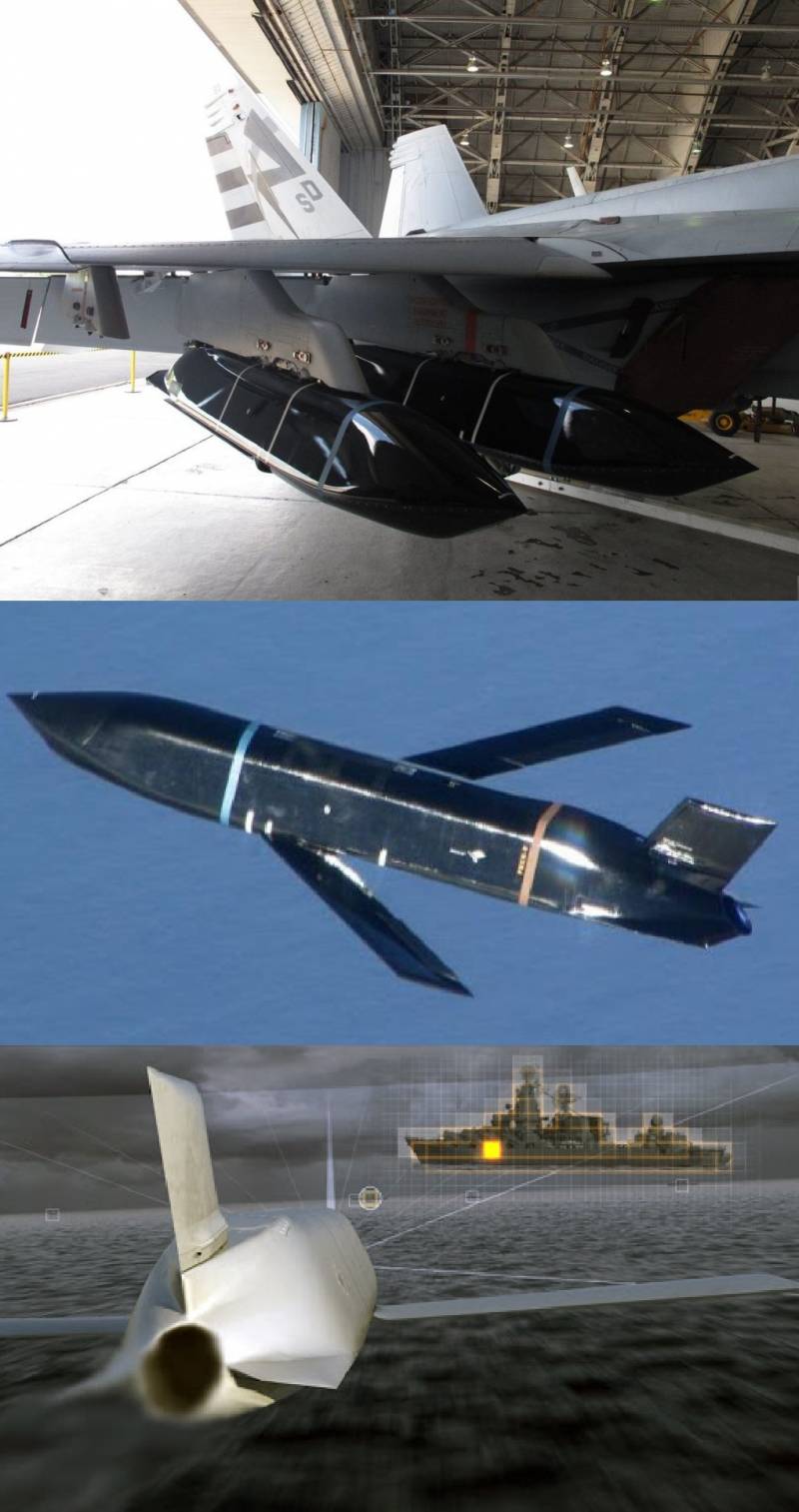
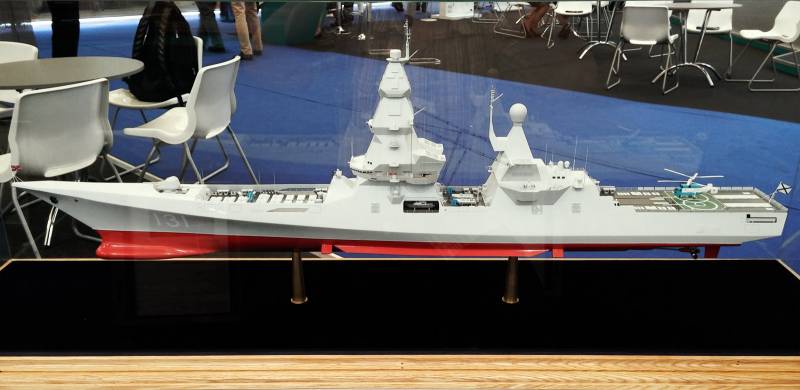
Information